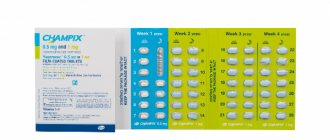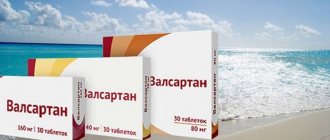Pharmacological properties
Remeron is a tetracyclic antidepressant with a sedative effect. It is most effective during depression.
Depressed states that the drug copes with are characterized by a number of symptoms - decreased tone, lack of positive and predominance of negative emotions and sensations, a picture of the world in dark colors, mental and motor retardation, sleep disturbances with early awakenings. This also includes frequent mood swings at certain times of the day, weight loss and suicidal thoughts.
Depressive disorders themselves increase the risk of suicide. Therefore, the patient needs medical supervision and the attention of loved ones in order to promptly identify negative changes in behavior.
The antidepressant effect of Remeron, as a rule, occurs in the second or third week of treatment.
New generation antidepressant
Why do psychiatrists today, if patients come to them about depression, panic attacks, etc., often prescribe Remeron? The instructions for use describe in sufficient detail the mechanism of its action, but, unfortunately, it does not indicate that this is a new generation antidepressant, during the development of which many factors were taken into account to make the drug as effective as possible and at the same time reduce side effects.
In a scientific article devoted to mirtazapine, the main active ingredient included in Remeron, a psychotherapist and employee of the Institute of Gerontology in Kiev, S. G. Burchinsky writes that this drug is distinguished by the following important characteristics:
- the clinical effect after starting to take the medicine occurs very quickly (almost in the first week of use);
- pronounced anxiolytic and thymoanaleptic effect;
- sedative effect and normalization of sleep.
pharmachologic effect
Positive reviews indicate that when used correctly, Remeron helps produce optimal levels of adrenaline and serotonin, blocks H1-histamine receptors, reduces the likelihood of allergic reactions, and does not cause addiction.
The effect of the drug starts in the body quite quickly. The duration of the half-life (20-40 hours, less often up to 65 hours) depends mainly on the age of the patient. A balanced content of the substance in the patient’s body is observed after 3-4 days and subsequently remains unchanged.
Remeron's analogues
Level 4 ATC code matches:
Pipofezin
Bethol
Incazan
Melitor
Azafen
Miaser
Velafax
Mirtazonal
Venlaxor
Venlafaxine
Lerivon
Mirtazapine
Cymbalta
Velaxin
Coaxil
Pyrazidol
Deprim
Gelarium Hypericum
Negrustin
Trittico
The closest analogues of the drug: Alventa, Velaxin, Venlaxor, Venlift, Gelarium Hypericum, Deprexor, Deprivit, Intriv, Coaxil, Medofaxin, Mianserin, Neuroplant, Pyrazidol, Trittico, Prefaxin, Negrustin, Valdoxan, Azafen, Normazidol, Venlafaxine, Cymbalta, Miaser, Melitor, Lerivon, Intriv, Deprim, Depresil, Wellbutrin, Brintellix .
Indications for use
Depression, depressive states with instability of emotions and mood, loss of feelings of joy, pleasure, interest, regular sleep disturbances (insomnia, nightmares), mental retardation, loss of interest in life and usual activities, sudden weight loss due to nervousness.
Contraindications for use
- Digestive problems, disturbances in the excretory system;
- Influenza-like syndrome (suspension of intake and blood test required);
- Excessive sensitivity to the components of the drug;
- Problems with lactose absorption;
- Pregnancy, breastfeeding, age under 18 years. For patients 18-23 years old, it is necessary to compare the likelihood of suicide and positive changes from drug therapy.
The reason for interrupting treatment in elderly patients is the occurrence of signs of jaundice.
Application in geriatric practice
According to the observations of doctors, Remeron is very well tolerated by elderly and senile people, despite the fact that it has a very effective and beneficial effect on this category of patients. This is an undoubted advantage of the drug, since many of the symptoms that accompany depression (anhedonia, anxiety, sleep disturbances, etc.) especially often plague people in old age. Considering the fact that in this age group the use of TADs (tricyclic antidepressants) is not recommended, in gerontopsychiatry Remeron is used in the treatment of literally all forms of depressive pathologies.
Important notes on Remeron therapy
Alcohol and antidepressants are incompatible, as evidenced by reviews from doctors and cases of patients who took the drug incorrectly. Therefore, during the therapeutic course and the withdrawal period, it is prohibited to drink alcohol.
During the treatment period, important indicators of attention (concentration, distribution) remain reduced. Therefore, patients should avoid driving cars and mechanisms that require high speed, precision of actions and reactions.
Use with caution
The attending physician must be attentive to the patient's history and current condition. Diseases and conditions for which Remeron should be prescribed with regular medical supervision, dose adjustment and dosage regimens:
- Organic brain lesions;
- Arterial hypo- and hypertension;
- Atrial fibrillation, atherosclerosis;
- Myocardial infarction, ischemic stroke;
- Cerebrovascular diseases;
- Diabetes mellitus;
- Liver, kidney failure;
- Prostate hypertrophy.
Special instructions for the use of the drug Remeron
Suicide/suicidal thoughts or worsening clinical symptoms. Depression is associated with an increased risk of suicidal ideation, self-harm, or suicide. The risk may last until significant remission occurs. Since improvement may not occur for the first few weeks of treatment or more, patients should be closely monitored until such improvement occurs. It is common clinical experience that the risk of suicide may increase in the early stages of recovery. It is known that patients with a history of suicidal events, or patients who exhibit a significant degree of suicidal ideation even before treatment, have a higher risk of suicidal ideation or suicide attempts, and should be closely monitored during treatment. A meta-analysis of placebo-controlled clinical trials of antidepressants used in adults with mental disorders showed an increased risk of suicidal behavior with antidepressants compared with patients under 25 years of age who received placebo. Careful monitoring of patients, especially those at high risk for suicidal behavior, should be accompanied by antidepressant therapy, especially during initial therapy and after dosage changes. Patients (and caregivers of patients) should be warned to be alert to any clinical signs, suicidal behavior or thoughts, and unusual changes in behavior, and to seek medical advice immediately if such symptoms are present. Taking into account the possibility of suicide, especially at the beginning of treatment, the patient should be given only the minimum required number of Remeron tablets. Suppression of bone marrow function. Bone marrow depression, usually manifested by granulocytopenia or agranulocytosis, has been reported during treatment with Remeron. Reversible agranulocytosis has been reported as a rare occurrence in clinical studies of Remeron. In the post-marketing period, very rare cases of agranulocytosis have been reported, most cases reversible, but in some cases fatal. Deaths occurred in patients over 65 years of age. Your doctor should watch for symptoms such as fever, sore throat, stomatitis, or other signs of infection. When such symptoms occur, treatment should be stopped and a clinical blood test performed. Jaundice Treatment should be stopped if jaundice occurs. Conditions that require medical supervision. Careful dosing and regular and close monitoring are necessary for patients with the following conditions:
- epilepsy and organic brain lesions: although clinical experience shows that epileptic seizures occur rarely during treatment with mirtazapine, as with treatment with other antidepressants, Remeron should be used with particular caution in patients with a history of epileptic seizures. In patients who develop epileptic seizures, or when there is an increase in the frequency of epileptic seizures, treatment should be discontinued;
- Hepatic Impairment: Following a 15 mg oral dose of mirtazapine, the clearance of mirtazapine is reduced by approximately 35% in patients with mild to moderate hepatic impairment compared with patients with normal hepatic function. The average plasma concentration of mirtazapine increases by approximately 55%. When prescribing 30 mg of mirtazapine, it is necessary to take into account the benefit/potential risk ratio for the patient;
- Renal impairment: After a single 15 mg oral dose of mirtazapine in patients with moderate (creatinine clearance ≤40 mL/min - 10 mL/min) or severe (creatinine clearance ≤10 mL/min) renal impairment, mirtazapine clearance decreased by approximately 30 % and 50%, respectively, compared to healthy patients. The mean plasma concentrations of mirtazapine increased by 55% and 115%, respectively. There were no significant differences observed in patients with mild renal impairment (creatinine clearance ≤80 mL/min to 40 mL/min) compared with controls. When prescribing 30 mg of mirtazapine, it is necessary to consider the benefit/potential risk ratio for the patient and monitor creatinine clearance;
- heart diseases such as conduction disorders, angina pectoris and recent myocardial infarction. Such cases require the usual precautions and concomitant therapy with caution;
- arterial hypotension;
- Diabetes mellitus: In patients with diabetes, antidepressants may affect blood glucose levels. Dosage adjustments of insulin and/or oral hypoglycemic agents may be necessary and close monitoring is recommended.
As with other antidepressants, the following must be taken into account:
- when taking antidepressants in patients with schizophrenia or other mental disorders, psychotic symptoms may worsen; Paranoid thoughts may become more intense;
- When treating the depressive phase of bipolar disorder, it can transform into a manic phase. Patients with a history of manic or hypomanic symptoms should be carefully monitored. Mirtazapine should be discontinued if the patient enters a manic phase;
- Although Remeron is not addictive, post-marketing experience suggests that sudden cessation of treatment after prolonged use may sometimes lead to withdrawal symptoms. Most withdrawal reactions are clinically mild and resolve on their own. Among the variety of withdrawal symptoms reported, the most common were dizziness, agitation, restlessness, headache and nausea. Although these have been reported as withdrawal symptoms, it is important to understand that these symptoms may be related to the course of the underlying medical condition. It is recommended to gradually discontinue treatment with mirtazapine;
- Caution is required when treating patients with urinary dysfunction, incl. with prostatic hypertrophy, patients with acute angle-closure glaucoma and increased intraocular pressure (however, the effect of Remeron is unlikely due to very weak anticholinergic activity);
- akathisia/psychomotor agitation: the use of antidepressants is associated with the development of akathisia, which is characterized by subjectively unpleasant or anxious agitation with increased motor activity. It is most likely that these symptoms may occur during the first few weeks of treatment, so increasing the dose may be harmful to health.
Hyponatremia. Hyponatremia, which is associated with inappropriate antidiuretic hormone (ADH) secretion, has been very rarely reported with mirtazapine. Elderly patients or patients taking concomitant medications known to cause hyponatremia require the use of precautions. Serotonin syndrome. Interaction with serotonergic active substances: Serotonin syndrome may occur when selective serotonin reuptake inhibitors are used together with other serotonergic active substances. Symptoms of serotonin syndrome may include hyperthermia, rigidity, myoclonus, and autonomic instability with possible rapid fluctuations in vital signs. Mental status changes include confusion, irritability, and extreme agitation that progress to delirium and coma. It is known from post-marketing experience that serotonin syndrome occurs very rarely in patients who use only Remeron. Elderly patients When prescribing Remeron to elderly patients, it is necessary to take into account undesirable effects when using antidepressants. In clinical studies of the drug Remeron, the occurrence of adverse reactions in elderly patients was observed no more often than in patients of other age groups. Lactose The drug contains lactose. Patients with rare hereditary diseases of galactose intolerance, Lapp-lactase deficiency or glucose-galactose malabsorption are contraindicated to take the drug. Use of the drug during pregnancy and lactation. Limited data from the use of mirtazapine in pregnant women do not indicate an increased risk of birth defects. Animal studies have not shown any teratogenic effects that manifest as clinical symptoms, but adverse effects on intrauterine development have been observed. Caution is necessary, taking into account the benefit/potential risk ratio for the fetus, when prescribing the drug to pregnant women. If Remeron is used before or immediately before birth, postnatal monitoring of the newborn is recommended to account for possible withdrawal effects. Animal studies and the limited available data from human studies have shown very low levels of mirtazapine excreting in breast milk. The decision whether to continue/discontinue breastfeeding or continue/discontinue therapy with Remeron should be made taking into account the benefits to the baby and the benefits of therapy with Remeron to the woman. Children. Remeron is not used to treat patients under 18 years of age. Behaviors related to suicide (suicide attempts and suicidal ideation) and aggression (primarily aggression, negativism, and anger) were most frequently observed in clinical studies among children and adolescents treated with antidepressants compared with children and adolescents treated with placebo. If a decision to treat is made based on clinical need, the patient should be closely monitored for the emergence of suicidal symptoms. In addition, long-term safety data in children and adolescents regarding growth, maturation, cognitive and behavioral development are lacking. Effect on the ability to drive a car and other mechanisms Remeron affects concentration. Patients taking antidepressants should not engage in potentially hazardous activities, including driving a car or using other machinery.
Directions for use, doses
The patient is prescribed Remeron, focusing on the effective dose for adults (including the elderly) - from the initial 15 - 30 mg / day, then gradually increased to 45 mg. The tablet is taken before bedtime, washed down with water if necessary, swallowed without chewing.
The frequency of taking Remeron is 1 time before bed or twice a day, dividing the tablet into two parts (the larger one is taken at night).
The duration of the course of treatment is from 4 months to six months. The reason for gradual withdrawal of the drug is the complete disappearance of clinical symptoms of depression.
The first signs of the positive effect of Remeron usually appear after 7-14 days of therapy. A stable positive response with adequate doses of the drug is observed after 2-4 weeks.
If the results are unsatisfactory, then in the third week the dose is increased to 45 mg per day. If the positive effect of Remeron does not occur for a long time (6-8 weeks after the start of therapy), then treatment with the drug must be stopped.
Release form and composition
The dosage form of Remeron is film-coated tablets:
- 15 mg: biconvex, oval, in a yellow thin shell, with the embossed inscription “TZ/3” above and below the score on one side, and “ORGANON” on the opposite; the core is white with a uniform pressed structure (10 pieces in a blister, 1 or 3 blisters in a cardboard pack);
- 30 mg: biconvex, oval, in a red-brown thin shell, with the embossed inscription “TZ/5” above and below the score on one side, and “ORGANON” on the opposite; the core is white with a uniform pressed structure (10 pieces in a blister, 1 or 3 blisters in a cardboard pack);
- 45 mg: biconvex, oval, white, with embossed “TZ/7” on one side and “ORGANON” on the opposite side; the core is white with a uniform pressed structure (10 pieces in a blister, 1 or 3 blisters in a cardboard pack).
Composition of 1 tablet:
- Active ingredient: mirtazapine – 15, 30 or 45 mg;
- Additional components: lactose monohydrate, hyprolose, colloidal silicon dioxide, corn starch, magnesium stearate;
- Film coating: macrogol 8000, hypromellose, titanium dioxide, red iron oxide dye (for 30 mg), yellow iron oxide dye (for 15 and 30 mg).
Overdose
There is a possibility of a lethal dose after significantly exceeding the therapeutic volume of Remeron and after taking several drugs simultaneously. In case of overdose, emergency symptomatic therapy (activated charcoal, gastric lavage) must be carried out to maintain the vital functions of the patient’s body.
Interaction of Remeron and related medications
The doctor should exercise caution if the following are already being taken at the same time as Remeron:
- other serotonergic drugs;
- antidepressant nefazodone;
- benzodiazepines and other sedatives;
- inhibitors of CYP3A4, HIV protease;
- inducers of hepatic metabolism (carbamazepine, rifampicin);
- azole antifungals;
- antibiotic erythromycin;
- antihistamine cimetidine;
- warfarin from the group of indirect anticoagulants.
MAO inhibitors and Remeron (mirtazapine) are not prescribed at the same time - only 2 weeks after the end of the course of MAO inhibitors.
During pregnancy and lactation
Experience with the use of the drug in pregnant women is limited. Animal studies have not shown any effects on the child's health. The question of prescribing the drug to pregnant women should be decided by the attending physician.
the mother took antidepressants during pregnancy , a postnatal examination of the newborn should be performed after birth to exclude the development of withdrawal syndrome.
The active ingredient of the drug passes into breast milk in small quantities. The decision to stop breastfeeding should be made after consultation with a specialist.
Rules for drug withdrawal
In terms of pharmacological properties, Remeron itself is not addictive. However, in patients with long-term drug dependence, a tendency to abuse psychoactive substances, and certain sensitive characteristics of the nervous system and psyche (which affect the general condition of the body and its individual subsystems), symptoms of addiction and painful withdrawal are observed. Sudden stopping of use after prolonged use is the cause of painful symptoms (dizziness, headaches, agitation, anxiety, nausea). After completing the course of therapy with Remeron, it is necessary to discontinue the drug gradually. If the expected result of treatment is achieved, and depressive episodes are not established in the anamnesis (and were not a manifestation of another disease - the consequences of chronic alcoholism or drug addiction, MDP, schizophrenia, etc.), then the period of drug withdrawal will be painless.
Side effects of the drug Remeron
Patients with depression exhibited symptoms that may be related to the disease itself. However, it is difficult to determine which symptoms are the result of the disease and which are the result of treatment with Remeron. The most common adverse reactions, occurring in more than 5% of patients treated with Remeron in randomized placebo-controlled trials (see below), are drowsiness, sedation, dry mouth, weight gain, increased appetite, dizziness, and increased fatigue. All randomized placebo-controlled studies of patients (including indications other than major depressive disorder) assessed the side effects of Remeron. The meta-analysis included 20 studies with a planned treatment duration of up to 12 weeks, with 1501 patients (134 patient-years) receiving mirtazapine doses up to 60 mg and 850 patients (79 patient-years) receiving placebo. The extension phases of these studies were excluded to maintain comparability with placebo treatment. Table 1 shows the incidence of adverse reactions that occurred in clinical studies. Frequently, adverse reactions were more statistically significant during treatment with Remeron than with placebo, given spontaneous reports of adverse reactions. Spontaneous adverse reactions that were reported from randomized placebo-controlled trials in patients who did not experience any events associated with mirtazapine were classified as “unknown.” Table 1. Adverse reactions of the drug Remeron.
Organ systems | Very common (≥1/10) | Frequent (≥1/100 to ≤1/10) | Uncommon (≥1/1000 to ≤1/100) | Rare (≥1/10000 to ≤1/1000) | Frequency unknown |
| General manifestations | Weight gain 1 | ||||
| Blood and lymph systems | Bone marrow suppression (granulocytopenia, agranulocytosis, aplastic anemia, thrombocytopenia) Eosinophilia | ||||
| CNS | Drowsiness 1, 4 Sedation 1, 4 Headache 2 | Lethargy 1 Dizziness Tremor | Paresthesia 2 Leg fatigue Syncope | Myoclonus | Convulsions (hemorrhages) Serotonin syndrome Paresthesia of the oral mucosa |
| Gastrointestinal tract | Dry mouth | Nausea 3 Diarrhea 2 Vomiting 2 | Oral hyposthesia | Swelling of the oral mucosa | |
| Skin and subcutaneous tissue | Exanthema2 | ||||
| Musculoskeletal system | Arthralgia Myalgia Back pain 1 | ||||
| Endocrine system | Impaired secretion of antidiuretic hormone | ||||
| Metabolism | Increased appetite 1 | Hyponatremia | |||
| Vascular manifestations | Orthostatic hypotension | Arterial hypotension 2 | |||
| General manifestations and reactions at the injection site | Peripheral edema 1 Increased fatigue | ||||
| Hepatobiliary system | Increased activity of plasma transaminases | ||||
| Mental manifestations | Sleep disorders Confusion Anxiety 2.5 Insomnia 3.5 | Nightmares 2 Mania Agitation 2 Hallucinations Psychomotor agitation (including akathisia, hyperkinesia) | Suicidal thoughts 6 Suicidal behavior 6 |
1 These adverse reactions occurred with greater frequency during treatment with Remeron than placebo in clinical studies. 2 These adverse reactions occurred at a higher frequency during treatment with placebo than with Remeron in clinical studies, but were not statistically significant. 3 These adverse reactions occurred with greater frequency during treatment with placebo than with Remeron in clinical studies. 4 NB Dose reduction does not usually reduce drowsiness/sedation, but may compromise the effectiveness of the antidepressant. 5 Agitation and insomnia (which may be symptoms of depression) may develop or worsen as a result of treatment with antidepressants. Development or worsening of agitation and insomnia have been reported during treatment with mirtazapine. 6 Cases of suicidal ideation and suicidal behavior have been reported during mirtazapine therapy or immediately after discontinuation of treatment.
When evaluating the data that were obtained during clinical studies, transaminase and gamma-glutamyl transferase were temporarily increased (however, adverse reactions associated with Remeron were not reported, which occurred with a higher frequency during treatment with Remeron than placebo).
Patient reviews of Remeron
Anton R .: Remeron helped me cope with a short-term depressive state. I took it in a small dosage, 30 mg, 15 mg in the morning and evening. These 15 mg worked well in my life situation. Adverse reactions included drowsiness the next day, increased appetite, but there were no critical moments.
Elena K .: At the age of 20, I had a nervous breakdown, followed by depression. I turned to a psychotherapist. I was prescribed Remeron and told how to take it correctly and what not to do to prevent the condition from worsening. I tried to follow all the recommendations of the psychotherapist, and by the end of the second week the first changes for the better appeared. Reactions to stimuli became less acute. My mood improved and positive motivation for further treatment appeared. After completing the course, I was able to return to normal life.
Content
Contraindications
Contraindicated in case of hypersensitivity and for the treatment of children under 18 years of age. The drug is not prescribed to patients with lactase deficiency, lactose intolerance, or glucose-galactose malabsorption syndrome.
The drug is used with particular caution to treat patients with organic brain damage and epilepsy, since Remeron can cause seizures in them. In addition, the drug is prescribed with caution to patients with the following diseases and disorders:
- Angina pectoris, arterial hypotension, heart disease with conduction disturbances, acute myocardial infarction.
- Urinary disorders and prostatic hypertrophy.
- Liver or kidney failure.
- Acute angle-closure glaucoma.
- Diabetes.






